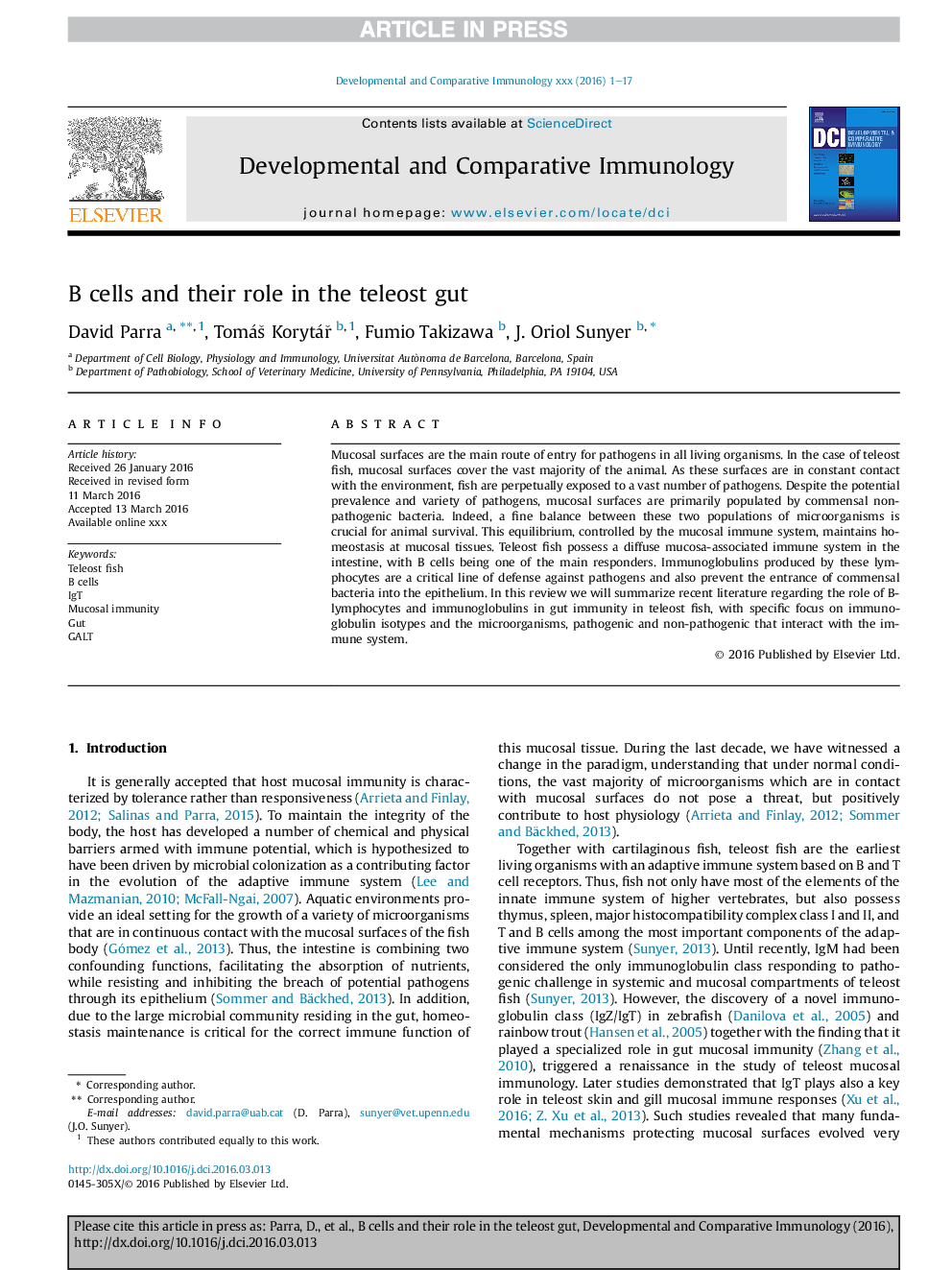| Article ID | Journal | Published Year | Pages | File Type |
|---|---|---|---|---|
| 8497911 | Developmental & Comparative Immunology | 2016 | 17 Pages |
Abstract
Mucosal surfaces are the main route of entry for pathogens in all living organisms. In the case of teleost fish, mucosal surfaces cover the vast majority of the animal. As these surfaces are in constant contact with the environment, fish are perpetually exposed to a vast number of pathogens. Despite the potential prevalence and variety of pathogens, mucosal surfaces are primarily populated by commensal non-pathogenic bacteria. Indeed, a fine balance between these two populations of microorganisms is crucial for animal survival. This equilibrium, controlled by the mucosal immune system, maintains homeostasis at mucosal tissues. Teleost fish possess a diffuse mucosa-associated immune system in the intestine, with B cells being one of the main responders. Immunoglobulins produced by these lymphocytes are a critical line of defense against pathogens and also prevent the entrance of commensal bacteria into the epithelium. In this review we will summarize recent literature regarding the role of B-lymphocytes and immunoglobulins in gut immunity in teleost fish, with specific focus on immunoglobulin isotypes and the microorganisms, pathogenic and non-pathogenic that interact with the immune system.
Related Topics
Life Sciences
Biochemistry, Genetics and Molecular Biology
Developmental Biology
Authors
David Parra, TomáÅ¡ KorytáÅ, Fumio Takizawa, J. Oriol Sunyer,
